Updates from Kalimantan
The first time we were in West Kalimantan was 2004. Since then, our hard-working staff Lius and Heri have been working with weavers, basket makers. Most days, rain or shine, they are driving through the muddy roads of West Kalimantan. Their work varies from helping to improve dye techniques, to picking up completed baskets and textiles, and finding ways to sustain plants for natural dye materials. We are honored to have Lius and Heri on our team, as they are also so knowledgeable about the culture in their communities. Here are some updates from our recent work in West Kalimantan over the past two months.
Morinda Dyeing Workshop
When Heri and Lius visited the weavers in Sintang to pick up some Pua Kumbu ikat ceremonial blankets and tating beaded woman’s skirts, they had the chance to see the weavers dyeing cotton threads with mengkudu (Morinda citrifolia). These red-dyed cotton threads will soon be woven into kain bidang smaller ikat blanket and hope to see the finished work on the next visit!
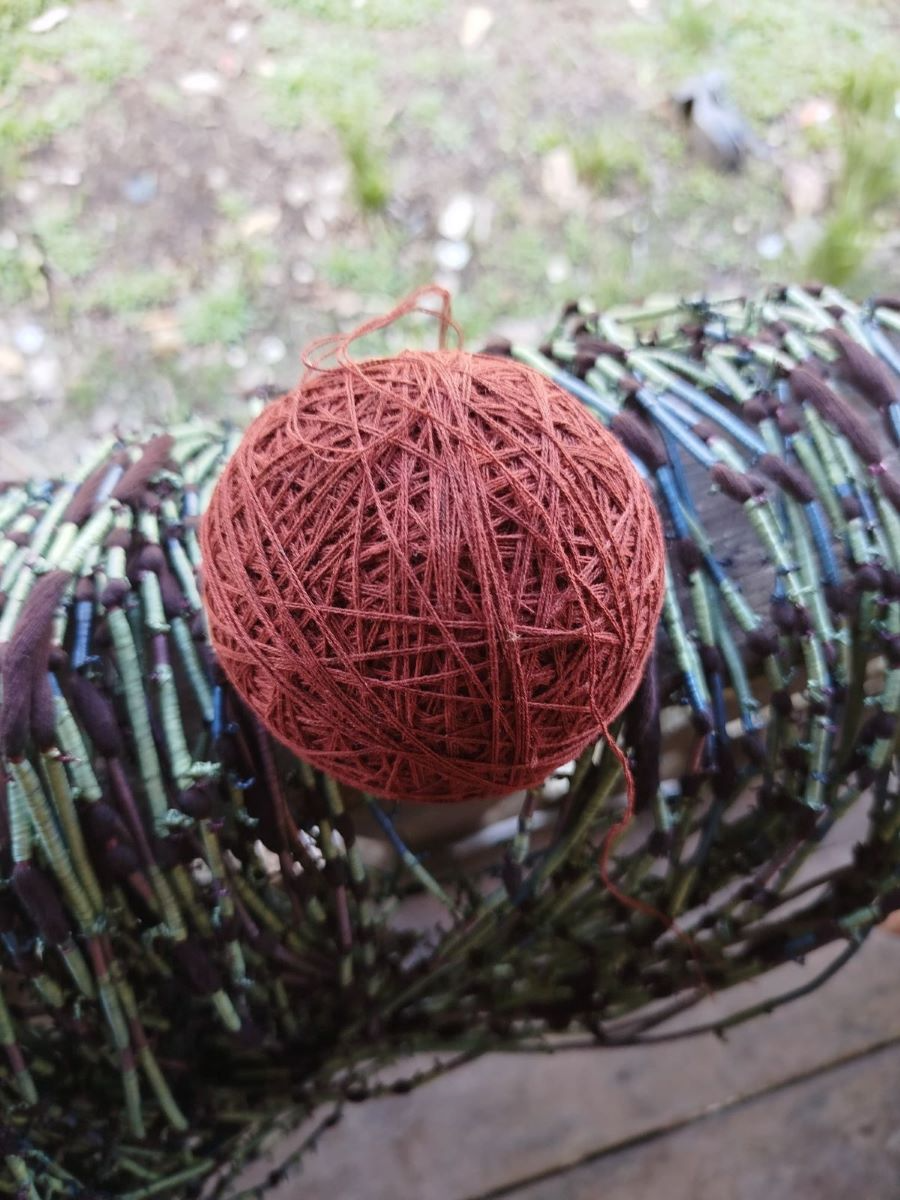
A cotton skein, dyed in morinda.
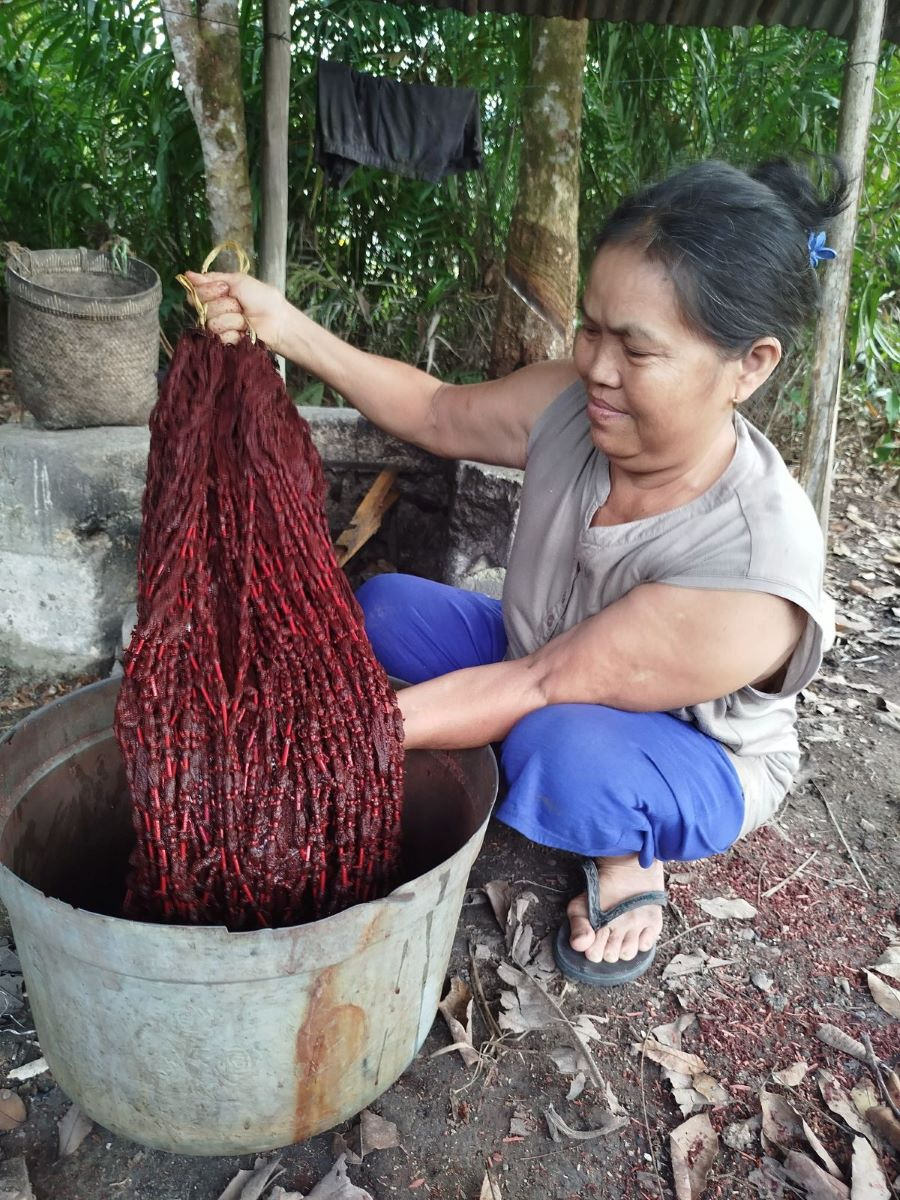
A weaver in Sintang during our morinda dye workshop.
Basketry
Other than textiles, we also picked up some basketry. Seen here in the photos are engkidung, cupai of all sizes, and a traditional hat called tanggui. For badah or containers, like engkidung and cupai, these basketry work are made of two materials; bamboo and the stems of senggang (Hornstedtia scyphifera). The senggang stems are dried, cut into fine strips, and woven as the inner lining of the basket. Then a particular type of bamboo is cut into sections and cut into fine strips to be woven over the inner lining. The black color for Kalimantan’s basketry is achieved by rubbing the outer layer of the bamboo (before it is cut) with a mixture of rambutan leaves and lamp soot while the red is made by rubbing the latex of the boiled fruit called jernang (Calamus draco) onto the outside of the uncut bamboo. One does not need a lot of jernang to get the latex, hence some basket weavers only has one or two trees in their garden.
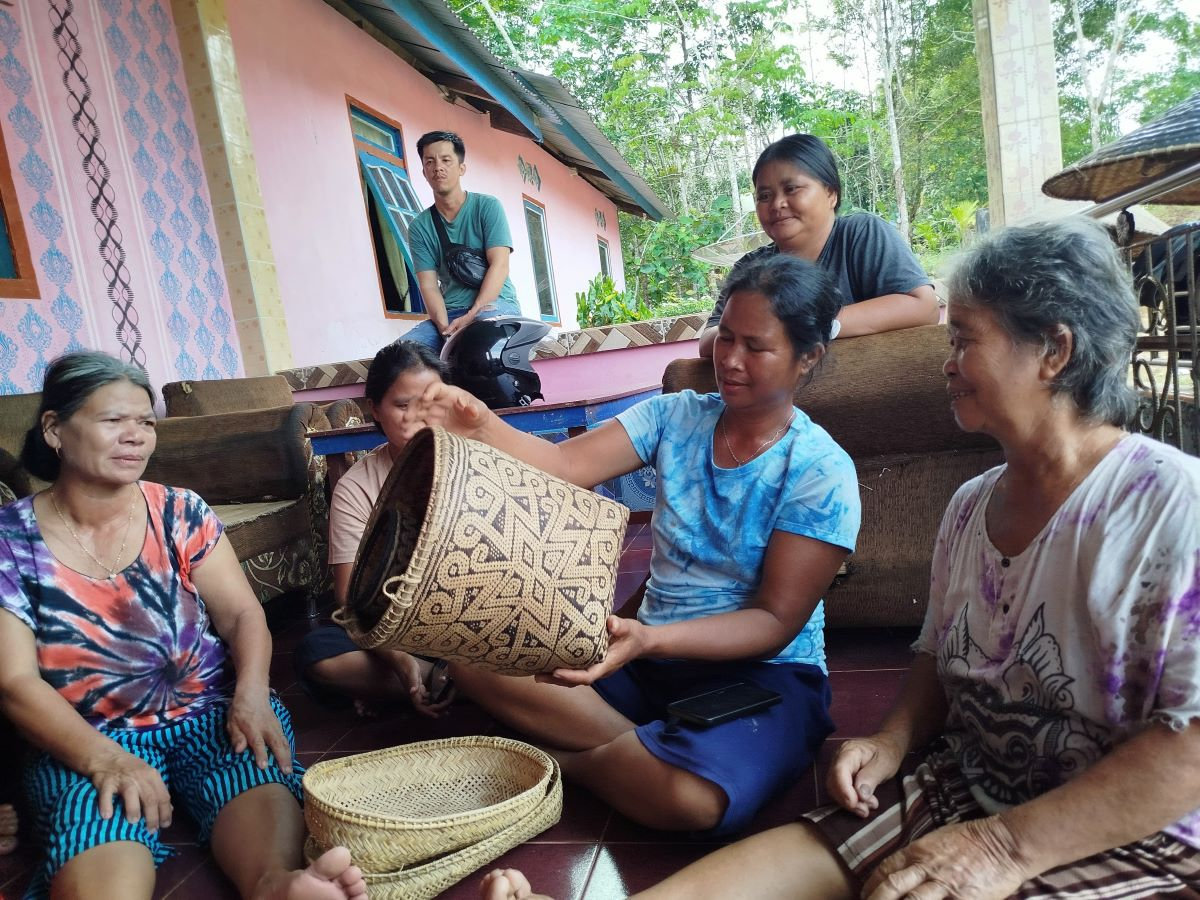
The weavers examining the baskets. Seen behind them is Heri.
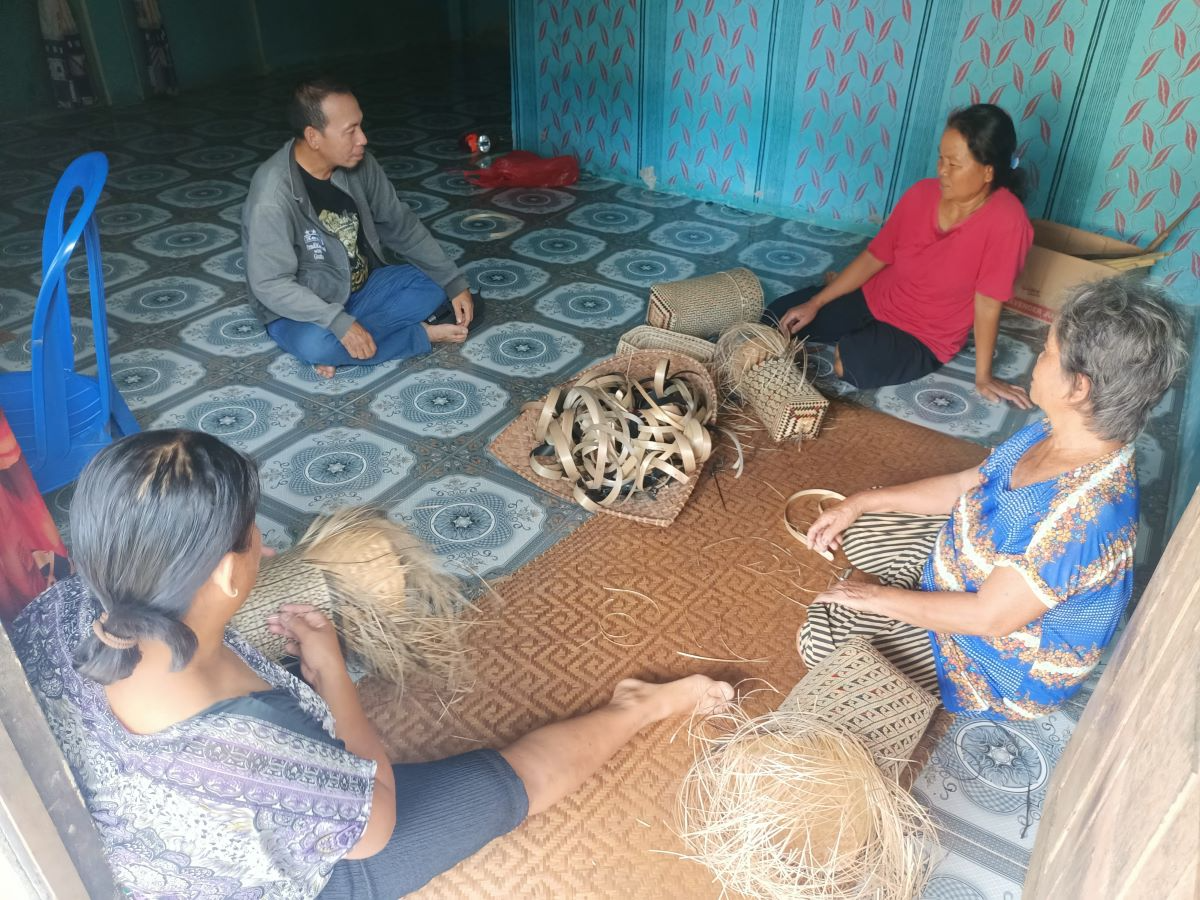
Lius with the weavers.
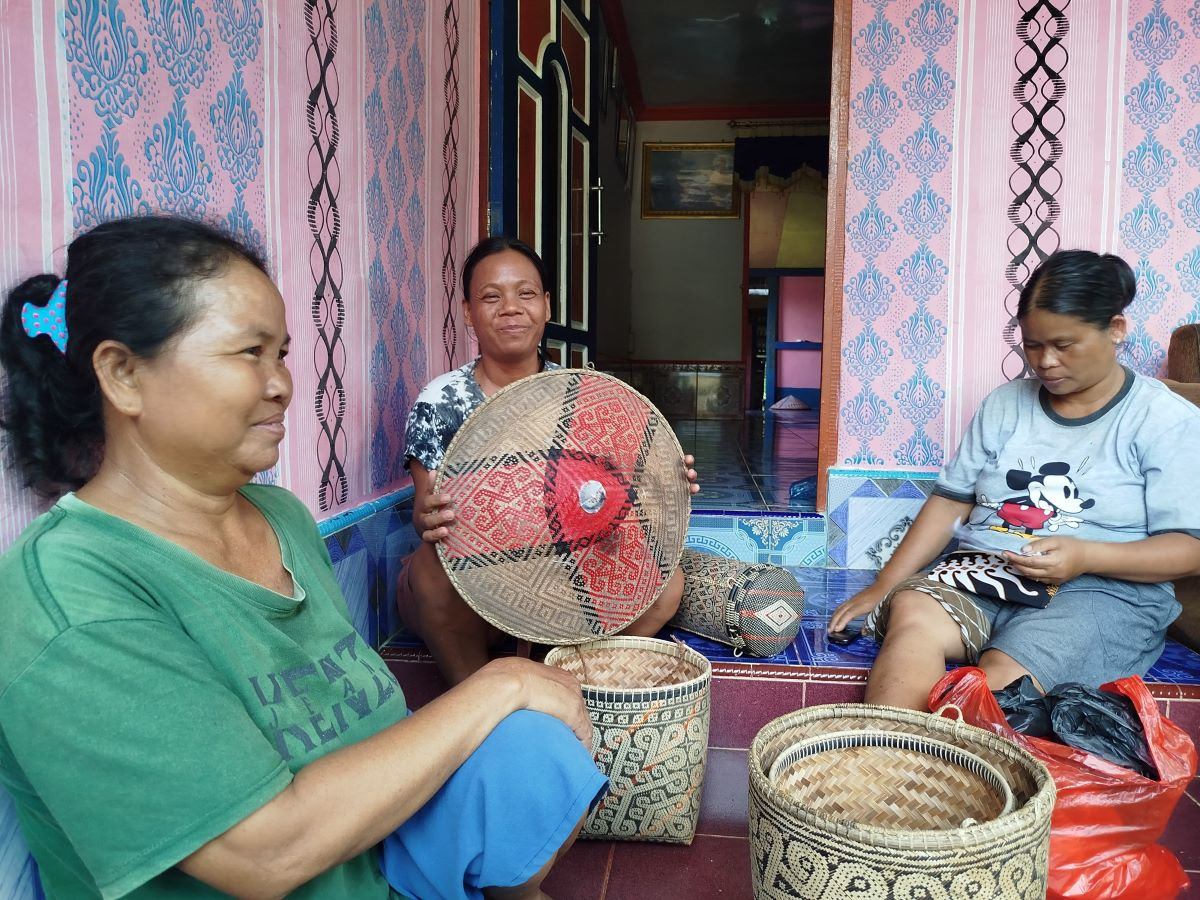
A proud weaver showing the tanggui she made.
From the forest
In the past two months, we have visited some gardens and forests to see the habitat of senggang (Hornstedtia scyphifera) and jernang (Calamus draco). When we were in a rubber plantation in Sintang, we saw a familiar plant from Zingiberaceae family. Apparently, this is the senggang plant. We saw it grow in the middle of a rubber plantation. Earlier in August, we made a visit to a jernang rehabilitation in Kapuas Hulu where we could see various types of jernang.
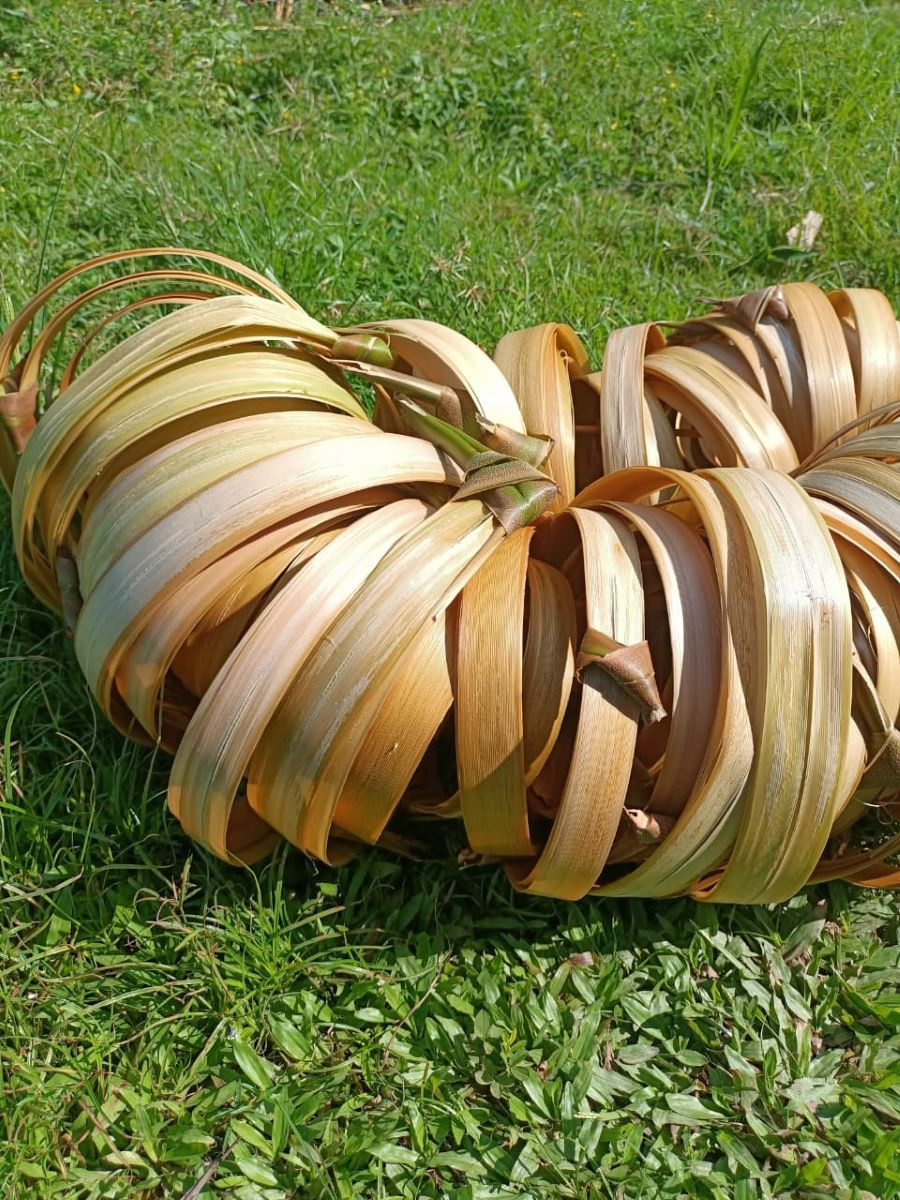
Dried senggang strips.
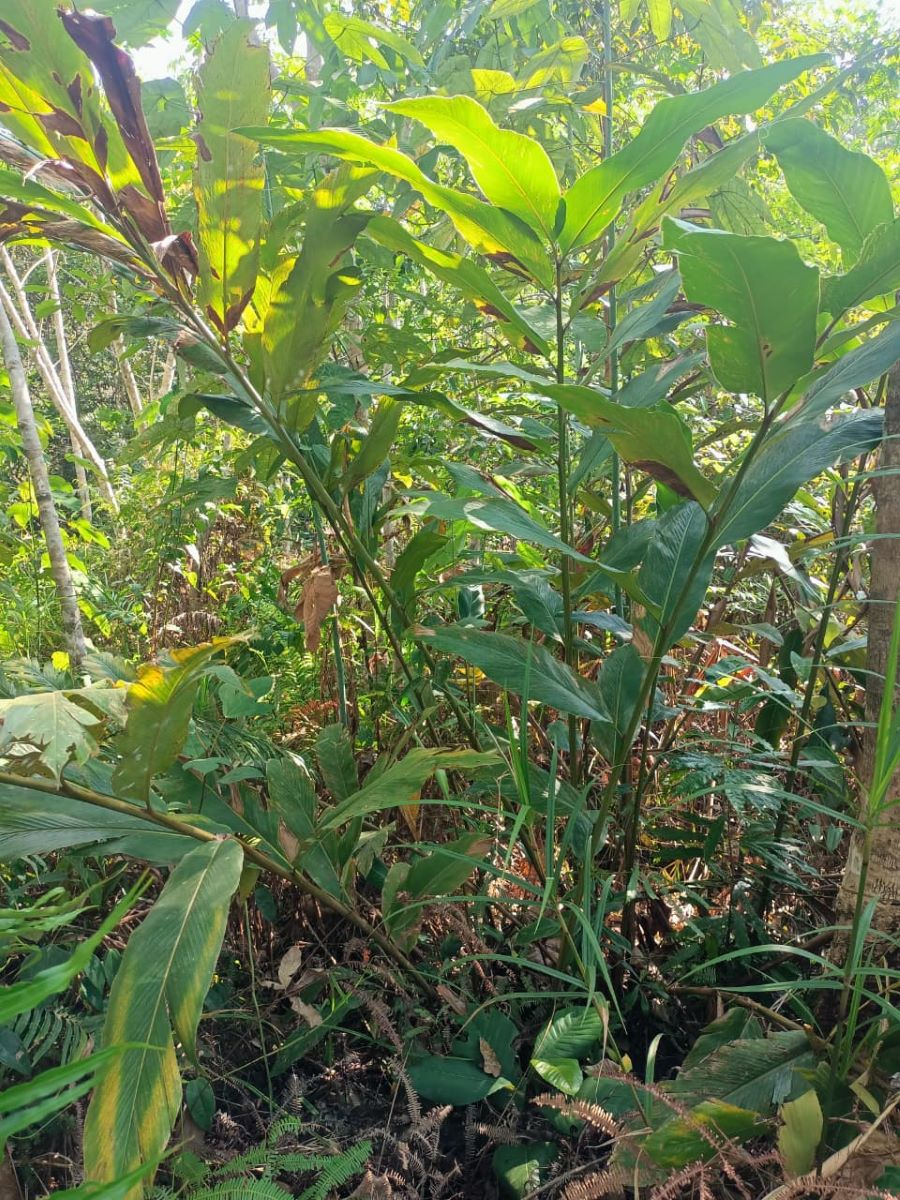
Jernang plant.
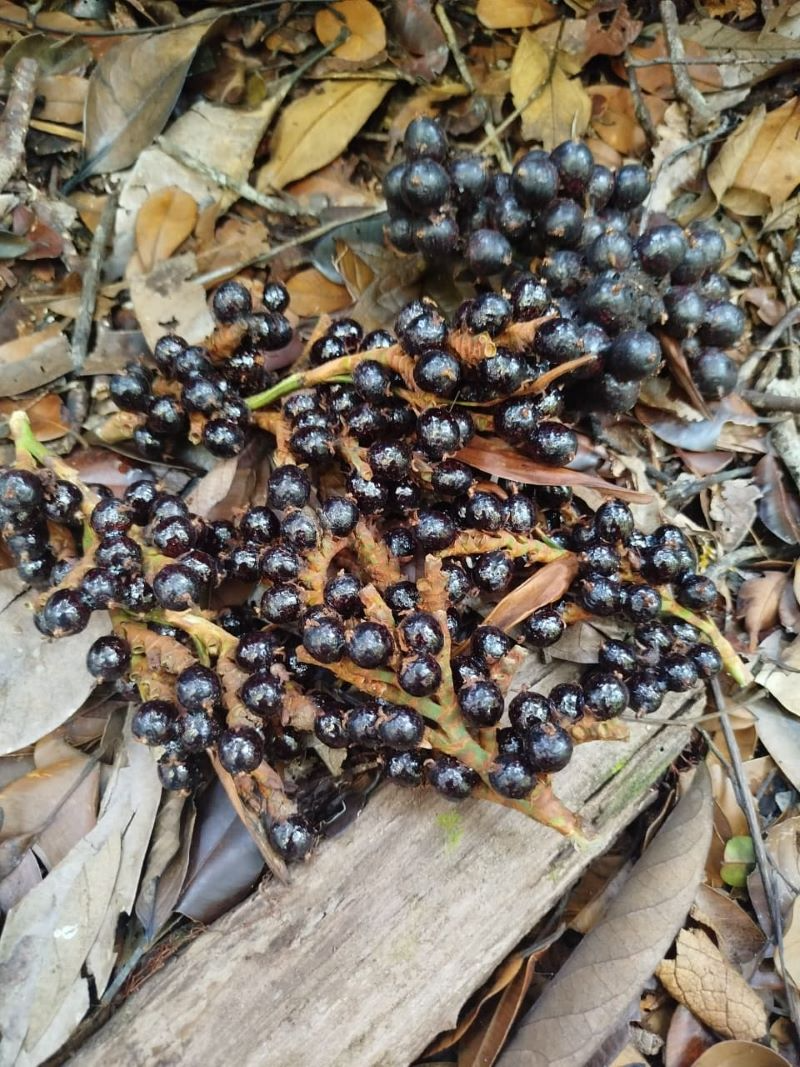
Jernang fruits.
manik anak ke aik
Other than visiting weavers and field, as part of the community in the village, Lius and Heri also get invited to come to ceremonies. Last month, Manik Anak ke Aik, a ceremony to bathe newborns, was held in Sintang. The mothers were dressed in tating, worn specially for life transition ceremonies like this. Manik Anak ke Aik is a ritual to ask the nature spirits to protect the child from any negative force. It is also said to be a time to introduce the baby to the spirit of the river. This year, there were only 7 babies who got to bathe in the river. “There was a huge rain and a blackout the day before the ceremony”, said Lius. Last year, there were more than 30 babies from several villages in Sintang joining this life transition ceremony.
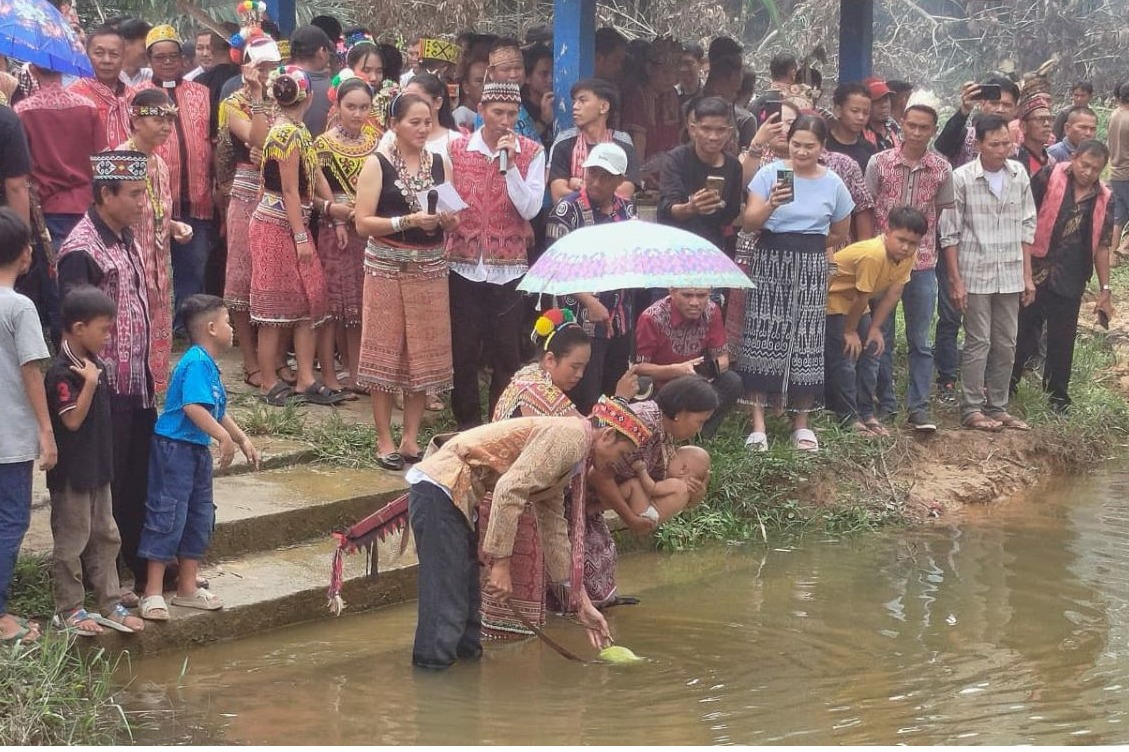
Mothers waiting to give their babies to the grandmothers to be bathed.
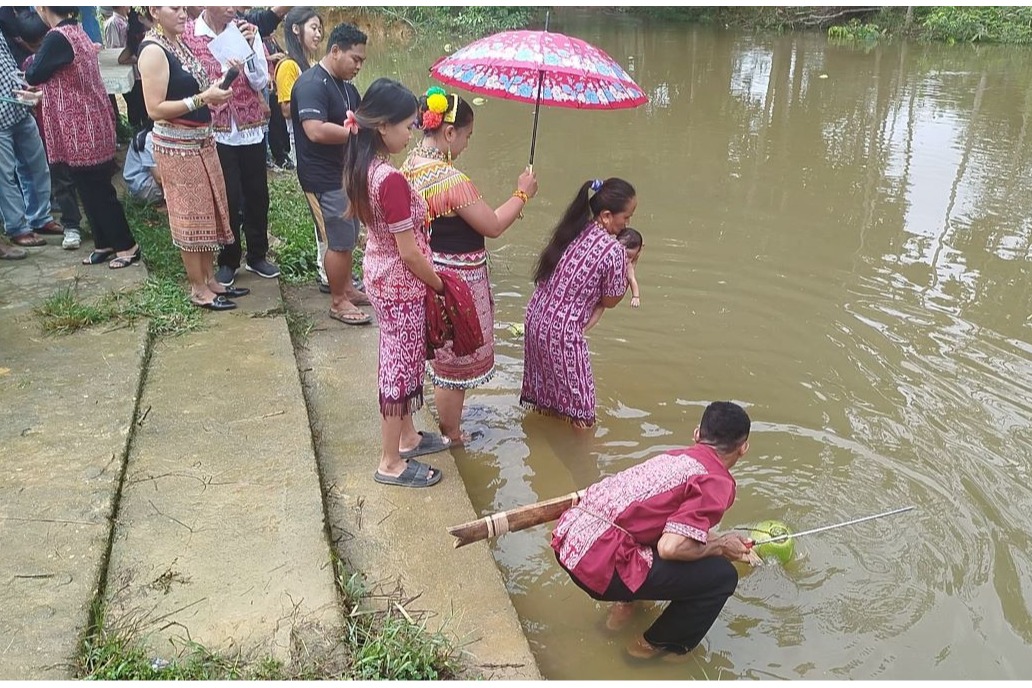
A grandmother gave the baby a bath, while the father cut the tip of a coconut with mandau sword.
See you on the next updates from Kalimantan!
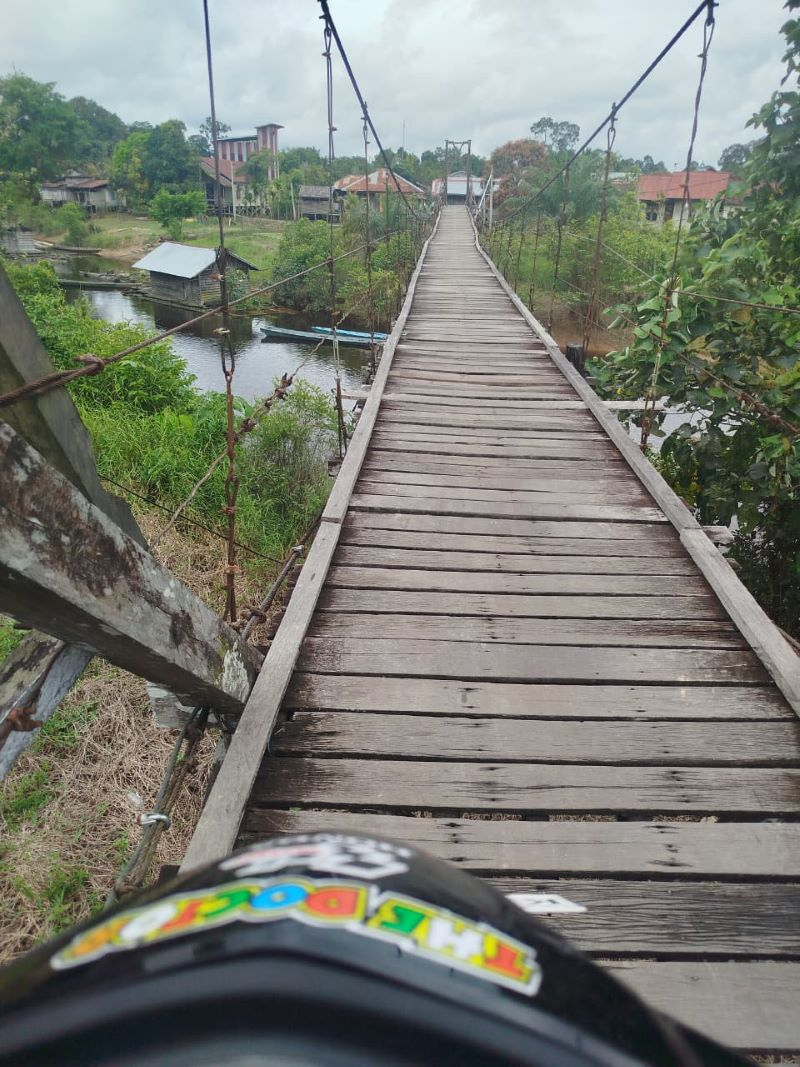
Crossing a bridge in Kapuas Hulu.
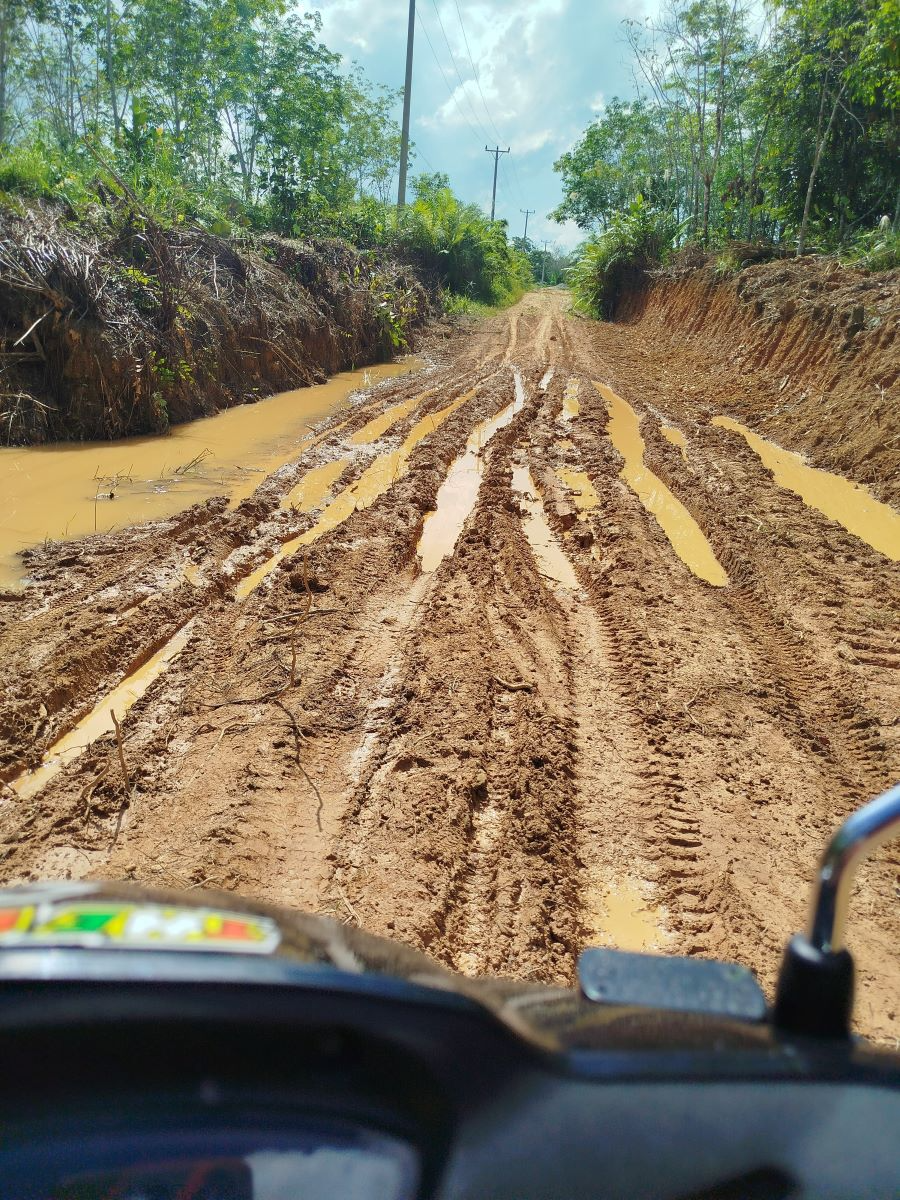
Driving through the muddy roads in Sintang.

